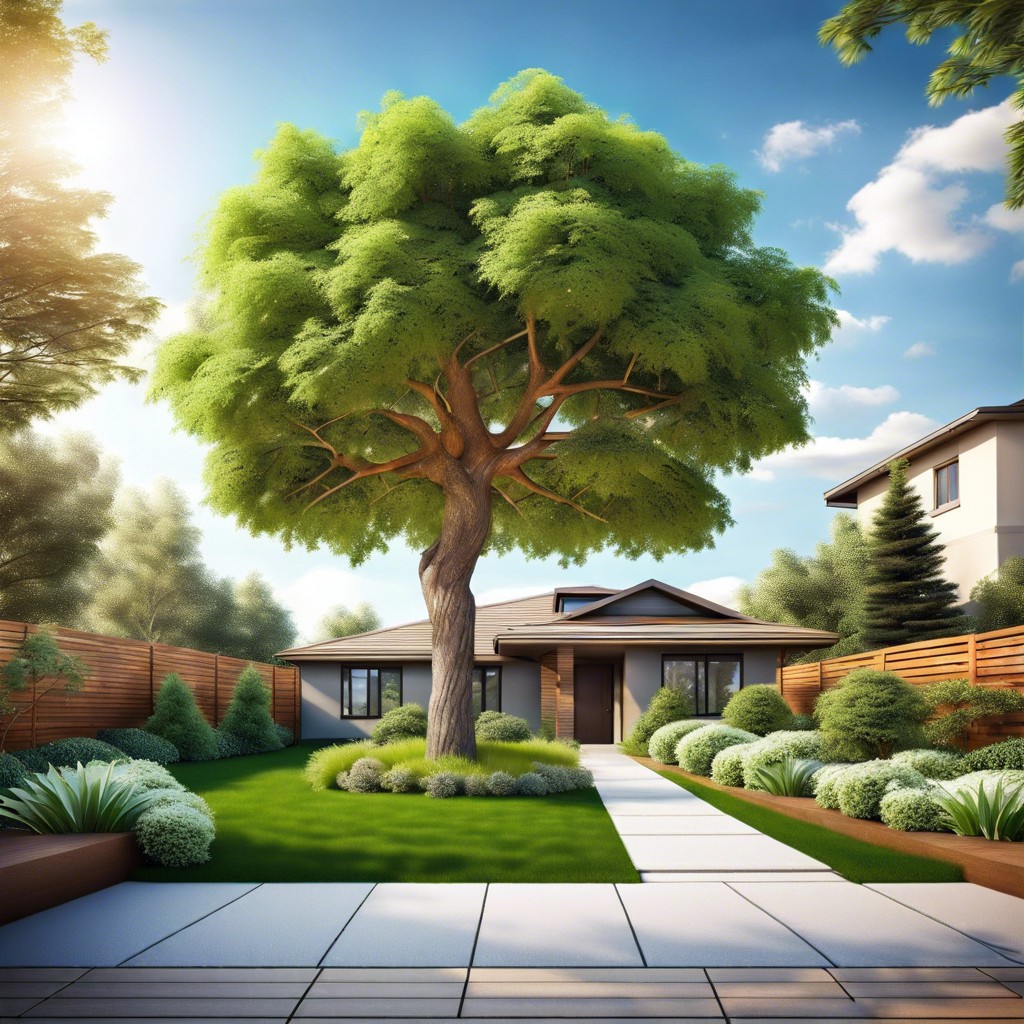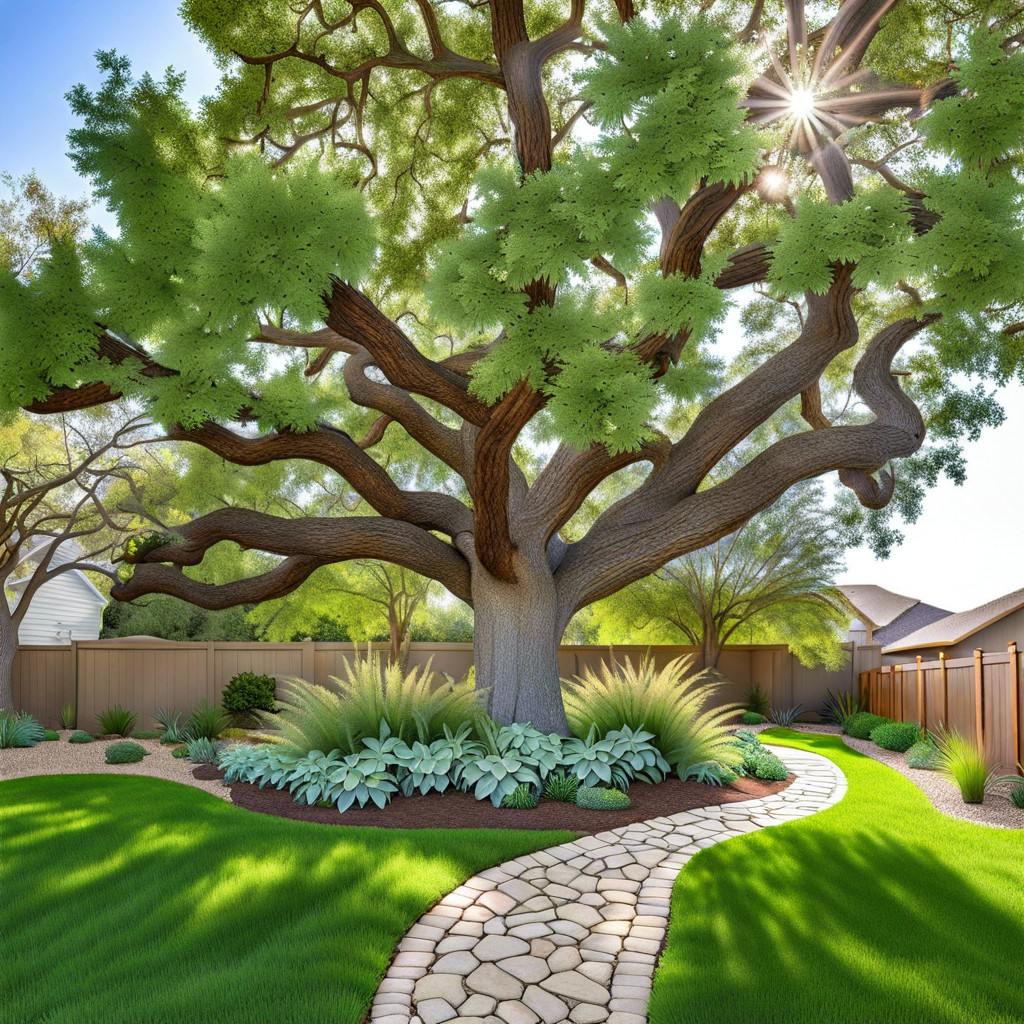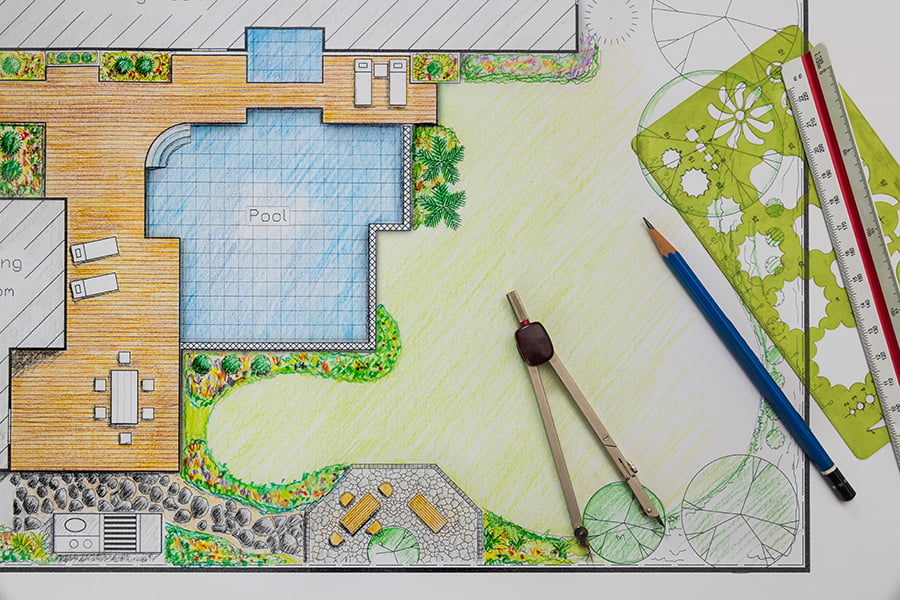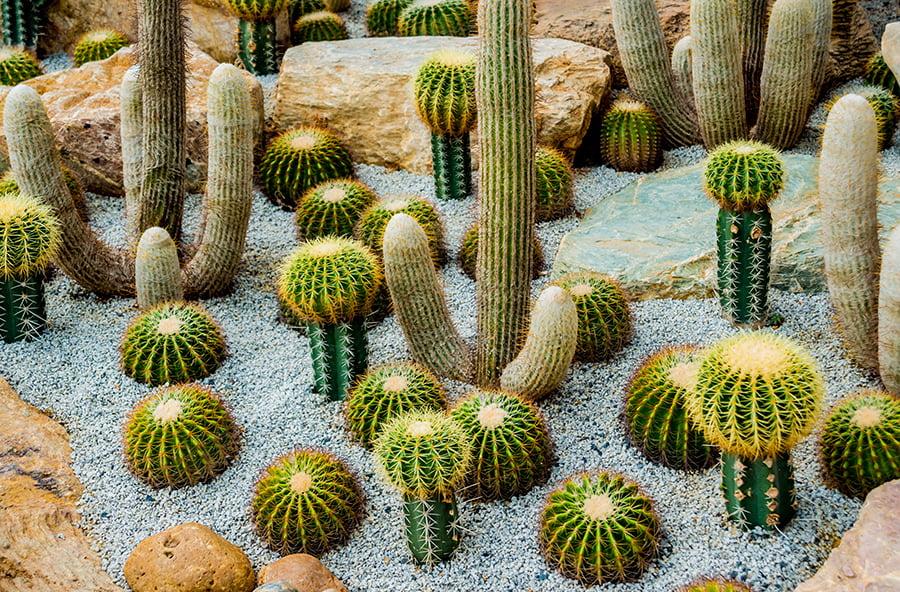Landscaping around trees enhances your garden’s beauty and health, and this article provides practical tips for creating an attractive and sustainable space beneath and around your trees.
Key takeaways:
- Assess tree health before landscaping
- Understand root systems and tree health
- Choose the right mulch for trees
- Select plants compatible with tree surroundings
- Design a tree-friendly landscape layout
Assessing Tree Health Before Landscaping

Before diving into any landscaping efforts, taking stock of your trees’ health is crucial. Healthy trees are vital to ensure both the beauty and safety of your landscaping project. Look for telltale signs such as vibrant, unfaded leaves, strong and flexible branches, and an absence of decay or unusual growths on the bark. Investigate further for any signs of disease or pest infestation, such as discolored leaves, holes in the bark, or sawdust-like material around the base of the tree, which may indicate boring insects.
The soil around the tree should be inspected as well. Soil that is compacted or devoid of organic material won’t support healthy tree growth. Gently probe around the base to assess moisture levels and aeration. If the soil is excessively dry or severely compacted, consider actions to remedy these conditions before proceeding with additional landscaping.
Remember to keep an eye out for how the tree responds to different seasons, which can give clues about its vitality. Seasonal changes in leaf color are part of a healthy tree’s life cycle, but leaves that wilt, brown, or drop prematurely could signal problems.
If you’re unsure about the health of your trees or how to proceed, it’s always wise to consult a certified arborist. They can provide a professional assessment and advice on steps to take before you add new plants, mulch, or design elements around your trees. Healthy trees will not only enhance the overall appearance of your landscaping but are also less likely to cause problems in the future.
Understanding Root Systems and Tree Health
Recognizing the intricacies of root systems is pivotal for ensuring a tree’s well-being when planning your landscape. Trees usually have two types of roots: the deep structural roots that anchor it, and the more superficial feeder roots that absorb water and nutrients. It’s these feeder roots, generally extending far beyond the tree’s canopy, that we must be cautious not to damage with landscaping activities.
A common mistake is to underestimate the breadth of a tree’s root zone. As a rule of thumb, the root spread can be two to three times wider than the canopy. Consequently, when landscaping, it’s important to avoid compacting the soil within this area as compressed soil can stifle root growth and hinder water infiltration.
Moreover, it is essential to monitor the tree for signs of stress, which may include wilting, discolored, or prematurely falling leaves. Such symptoms could indicate that the landscaping efforts are impacting the tree’s root system and overall health.
Finally, when adding new elements to your garden, considering root depth is key. Avoid deep digging around trees to preserve the complex web of roots. Prioritizing the health of a tree’s roots in your landscaping plan not only protects the tree but also maintains the ecosystem balance in your garden. By acknowledging the symbiosis between root health and thriving landscapes, you can create a harmonious outdoor space.
Choosing the Right Mulch for Trees
Selecting suitable mulch for your trees is crucial for ensuring their health and vigor. Organic mulches, such as wood chips, bark, or shredded leaves, foster a beneficial environment for tree roots by conserving soil moisture, stabilizing soil temperature, and reducing weed competition. It’s vital to apply mulch properly; a 2 to 4-inch layer is ideal. Too much mulch can lead to moisture retention and root rot, while too little will not provide the desired benefits.
When applying mulch, keep it a few inches away from the trunk of the tree. This practice prevents moisture buildup against the bark, which could cause decay or provide a home for pests. Mulching out to the drip line, the outermost circumference of the tree’s canopy, is recommended as it mirrors the extent of the critical root zone, offering maximum benefits.
Remember to refresh the mulch periodically, typically once a year, to maintain its effectiveness. Composted wood chips are particularly beneficial as they provide nutrients while decomposing. However, avoid piling mulch against the trunk in the shape of a “mulch volcano”; it’s a common mistake that can have detrimental effects on tree health.
Selecting Compatible Plants for Tree Surroundings
When choosing plants to encircle your tree, start by considering the tree’s own needs and how the plants you select will coexist alongside it. Strive for a harmony, where the plants enhance the tree’s beauty without jeopardizing its health.
First, match the plants to the tree’s water and light requirements. Shade-loving perennials, like hostas or ferns, are excellent under large trees with dense canopies, while sun-thirsty varieties could struggle. Conversely, under a tree with a light, airy canopy, sun-loving flowers and shrubs are more appropriate.
Moreover, look for plants with shallow root systems that won’t compete aggressively with the tree roots for nutrients and water. Ground covers, such as creeping thyme or periwinkle, work well because they don’t tend to disrupt the soil deeply and still provide a visually appealing blanket under the tree.
It’s also vital to take the soil’s condition into account. Trees can alter the soil’s pH and texture over time, which affects what will thrive around them. For instance, some trees can make the surrounding soil more acidic, favoring acid-loving plants.
Lastly, consider the long-term growth of both the tree and the companion plants. Ensure that there’s enough space for each element to grow without hindering the others. This foresight ensures that you won’t need to prematurely relocate or remove plants later down the line, keeping both the plants and the tree stress-free.
Designing a Tree-Friendly Landscape Layout
When envisaging a landscape layout that honors and complements your trees, consider the importance of space. Trees need ample room to grow, both above and below the ground. Resist the urge to crowd a tree with plants or structures. Instead, maintain a clear zone around the trunk to prevent damage to the bark, which can leave the tree vulnerable to disease and pests.
Incorporate a variety of heights and textures with understory plantings that thrive in the dappled light trees provide. This not only adds depth and interest to your landscape but also mimics the tree’s natural environment. Remember, though, to select plants that have similar water and light requirements to your tree, ensuring that neither the tree nor the new plants suffer from competition.
Pathways near trees should be constructed with care. Opt for materials that allow water and air to penetrate, like mulch or gravel, rather than impermeable concrete or pavers, which can restrict tree growth and hinder water absorption.
Lastly, when fertilizing or changing the grade of the land, do so with caution. Both can affect the health of your trees significantly. Grade changes can alter the moisture levels in the soil, potentially harming the tree roots, while fertilization should be done based on the type of tree and its specific needs.
By taking these points into account, you’ll design a landscape that not only enhances the beauty of your trees but also fosters a healthy, cohesive environment for your entire garden.




